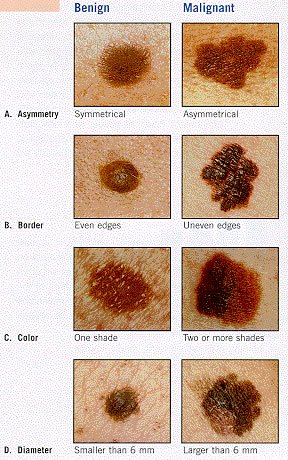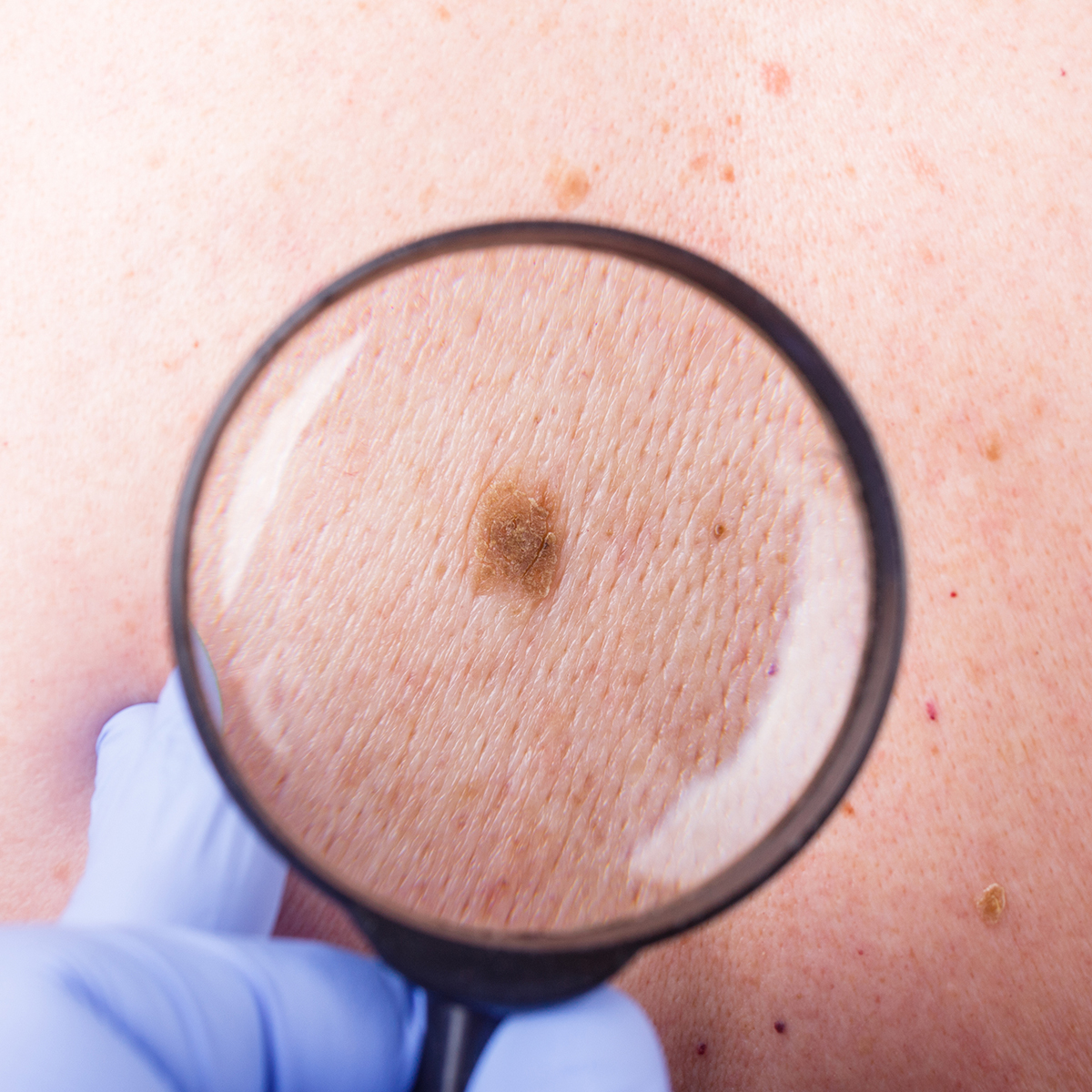My wife recently told me she noticed a mole on my back that looked strange. Now I’m worried. What should I be looking for?
Paul M., Terra Linda
Most Melanomas begin in or near an existing mole or dark spot already on your skin. That’s why it is so important to have a yearly skin check with a licensed dermatologist. They will be able to chart the size, shape, color and location of moles on your body. At your annual visit they will be able to note changes in the appearance of the previously charted moles and begin tracking the appearance of new moles.
Ordinary moles are generally even in color, have sharply defined edges and are round or oval. They can be either flat or raised and are often less than 6 millimeters (the size of a pencil eraser). Melanomas on the other hand, often have an irregular appearance and are larger (see below). It’s important to know that some birthmarks, also known as congenital moles, can develop into melanomas over time.
Take a few minutes to watch the Skin Cancer Self Check Video here on our website. A good rule of thumb is to think of the letters ABCDE:

- A is for asymmetrical shape.Look for moles with irregular shapes, such as two very different-looking halves.
- B is for irregular border.Look for moles with irregular, notched or scalloped borders — characteristics of melanomas.
- C is for changes in color.Look for growths that have many colors or an uneven distribution of color.
- D is for diameter.Look for new growth in a mole larger than 1/4 inch (about 6 millimeters).
- E is for evolving.Look for changes over time, such as a mole that grows in size or that changes color or shape. Moles may also evolve to develop new signs and symptoms, such as new itchiness or bleeding.

